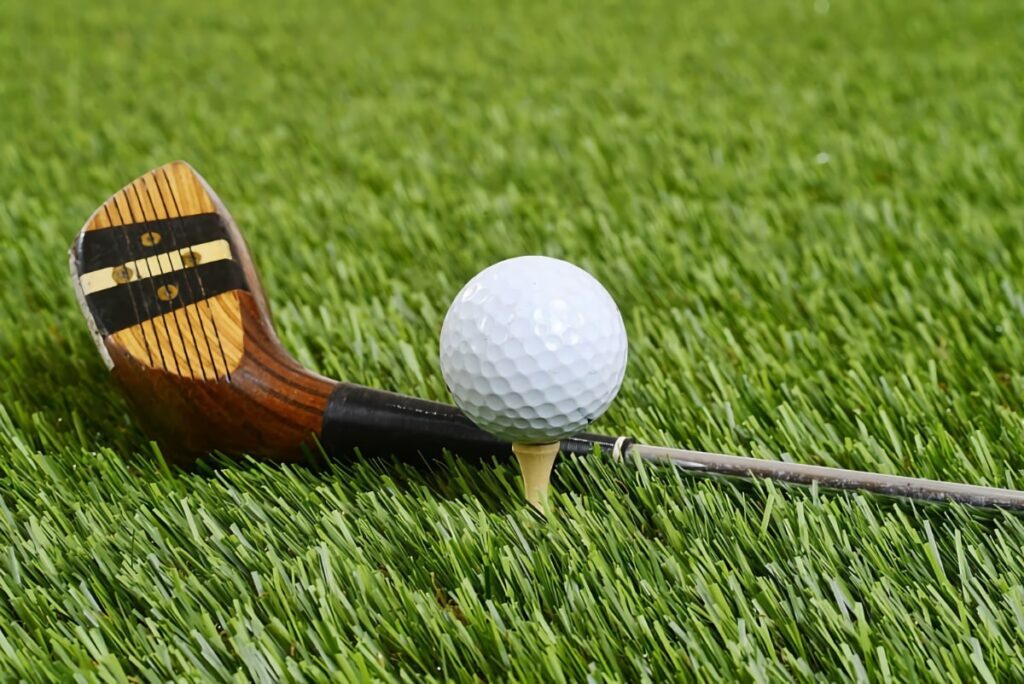Golf clubs have come a long way from woods in the literal sense of the word!
Today, the vast majority of drivers in the market are constructed from metal and plastic, with large hollow club heads designed to offer maximum distance and forgiveness.
So, 1 wood vs driver — is there a difference?
1 Wood vs Driver
In golf, 1 wood is another term for a driver. It’s the lowest lofted club in the bag and traditionally came first in a set of wooden clubs. However, today it’s most commonly referred to as a driver — the club is designed to “drive” the ball a long distance.

History of the 1 Wood
A 1 wood — more commonly known as a driver — is the lowest lofted club in the bag, designed primarily for hitting long-distance shots off the tee. It’s also the largest-headed golf club, offering plenty of MOI and forgiveness for the faster ball speed.
The 1 wood first came about in the 1920s, along with the production of numbered golf club sets. So, to distinguish clubs of varying lofts, each club was given a number, with the 1 wood being the lowest-lofted wooden club in the set.
Before the introduction of numbered sets, the 1 wood was known simply as a driver, as the club was effectively used to “drive” the ball as far as possible from the tee box.
Many times, golfers will carry a set of three woods in their bags: a driver, 3 wood, and 5 wood. These are used for long-range shots off the tee or directly off the turf.
Below, you’ll find some of the fascinating original names used for golf clubs before the advent of the numbered set in the early 20th century:
| Original | Modern |
| Driver | 1 Wood (now called driver again) |
| Brassie | 2 Wood |
| Spoon | 3 Wood |
| Wooden Cleek | 4 Wood |
| Driving Iron | 1 Iron |
| Mid Iron | 2 Iron |
| Mid Mashie | 3 Iron |
| Mashie Iron | 4 Iron |
| Mashie | 5 Iron |
| Spade Mashie | 6 Iron |
| Mashie Niblick | 7 Iron |
| Lofting Iron | 8 Iron |
| Niblick | 9 Iron |
| Putting Cleek | Putter |
While many of the original names were replaced, the term driver remained popular.
In 1979, Gary Adams founded TaylorMade Golf to introduce the first metal driver. With 12 degrees of loft and a hollow steel head, the club pioneered the modern “1 wood” and metal became the primary material in the production of all golf clubs.
While the term 1 wood is rarely used in golf today, many modern drivers feature the number “1” printed on the sole. This makes total sense since the other woods and irons in the bag are marked with their respective number for clarity.
Today, the driver is the most expensive club in the bag. Featuring significantly larger hollow heads than the original wooden versions, the modern driver allows for better forgiveness and increased distance suited to a range of skill levels.

FAQs
What Is a Fairway Wood?
Fairway woods look like miniature drivers, and are designed to hit long-range shots directly off the turf. They can also be used off the tee, usually when a tee shot with a driver is likely to travel too far — like when aiming for the corner of a dogleg.
Commonly, fairway woods are either 3 woods, 5 woods, 7 woods, or 9 woods. So, the higher the club number, the higher the loft and shorter the intended distance.
| Fairway Wood | Typical Loft (degrees) |
| 3 Wood | 13-16º |
| 5 Wood | 17-19º |
| 7 Wood | 20-22º |
| 9 Wood | 23-26º |
Is There Such Thing as a 2 Wood?
2 woods are very rare in the modern game. Usually, golfers will carry both a driver (1 wood) and a 3 wood, and it’s unnecessary to fill the distance gap between the two.
Before the USGA imposed the 14-club restrictions, many players carried upwards of 20 to 30 clubs in their bag. In those times, it was certainly viable to carry a 2 wood.
However, with the 14-club limit, golfers are better suited to carrying an additional wedge or short iron for the more frequent approach and chip shots.
Alternatively, strong-lofted 3 woods are available for golfers who wish to carry the equivalent of a 2 wood in their bag. This can be particularly useful for long-hitting players who are looking for a club to fill a large distance gap to their driver.

Conclusion
In summary, 1 wood is another term for driver in golf. It’s the club designed with the lowest degree of loft — primarily designed for long, penetrating tee shots.
Until the advent of numbered sets, 1 woods were known as drivers. But, the word driver continued to remain the most popular term, and remains so today.
Nowadays, drivers are commonly made from a combination of metal and plastic in a hollow and oversized design. This produces a large, forgiving, and lightweight club head intended to hit the ball as far as possible.
In answer to the 1 wood vs driver debate — 1 wood simply is another term for driver!


